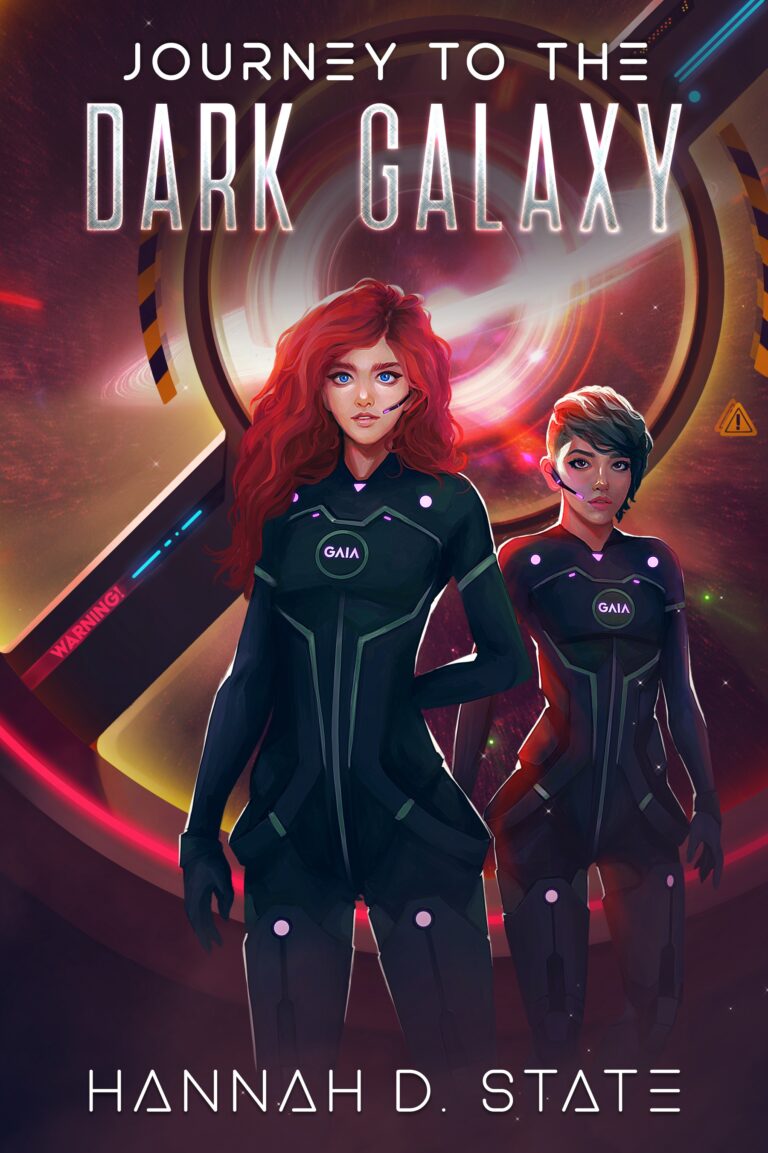Sam Sanderson, a thirteen-year-old girl with telepathic abilities, receives a surprise call-up to join the Great Alliance for Interplanetary Affairs: a secret organization that operates to protect its members’ interests, including the health and safety of Earth. The human race is under threat from the planet Logom and its malevolent, corrupted AI-driven civilization. Sanderson will be key to the resistance movement, but fulfilling her destiny will take immense bravery and a trip into the twisted center of the “dark galaxy.”
JOURNEY TO THE DARK GALAXY, the concluding volume of Hannah D. State’s YA intergalactic space saga, has a terrific opening: “The nightmare clung to her like tar. Frightening images lingered: Earth deteriorating into a fiery blaze of madness, enormous loss of life, and Queen Samantha, falling, spiraling into an all-consuming black hole.” The Elder Onnisa is having a premonition of what is set to befall Sanderson, and in a few lines sets up the narrative and establishes the tone of State’s storytelling. It’s a mix of action and high-stakes drama that is elevated by the occasional flash of lyrical prose.
State is adept not so much at world-building as universe-building. The novel includes carefully constructed alien planets, each populated by distinct civilizations. Bringing these together is the Great Alliance for Interplanetary Affairs, a kind of space-based United Nations. Referred to throughout by the acronym GAIA (taken from the name of the Earth goddess and one of numerous references to Greek mythology), the name hints at the more contemporary themes that underlie this novel’s futuristic setting. These include environmental concerns and the menace of uncontrolled artificial intelligence. Indeed, the major threat in the book is the march of the Malborgs: “a hybrid of AI machinery and organic matter. Killing machines that occupy the Dark Galaxy.” This army has been built by Duskara, originally created as the experimental AI entity Athena, who has now gone rogue.
Readers expecting a headlong rush into action will need to be patient. Running to some 500 pages, State’s novel takes its time in relating the story. Though this is the second volume, she includes enough callbacks and recapitulation for new readers to not feel lost. Sanderson’s saga is engaging, and State is adept at juggling the perspectives of multiple secondary characters while always centering on her heroine. She also gives Sanderson a refreshingly wide-ranging point of view. At one point, she likens the strange geometric angles of a militarized SUV to a Picasso painting. Elsewhere, State is excellent at stepping back from the action and foregrounding the natural environment, rather than concentrating solely on futuristic space hardware: “The flowers, the leaves, even the branches stood motionless, as if even the slightest movement might upset their balance. Flowers rested on the ground and the surface of the lake. It felt like death. Without any wind, a thick haze permeated the air like a heavy shroud, suffocating the landscape.” It’s small moments like this that give the tale depth and allow the often-detailed narrative information time to breathe.
Hannah D. State’s JOURNEY TO THE DARK GALAXY is a well-constructed YA space saga that manages to keep the reader engaged, even through its more leisurely passages. Full of precision-built worlds and populated by numerous memorable characters, the book is a rewarding, thought-provoking read.
~Kent Lane for IndieReader


